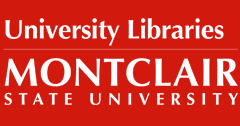Ectoparasites of American Kestrels in Northwestern New Jersey and Their Relationship to Nestling Growth and Survival
Document Type
Article
Publication Date
9-1-2012
Abstract
American Kestrel (Falco sparverius) populations have been declining throughout much of North America during recent decades. To determine if the ectoparasite burdens of nestlings may be a contributing factor, we examined broods of kestrels in nest boxes in northwestern New Jersey. Our objectives were to identify and quantify the arthropod ectoparasites of nestlings, and to determine if removing these parasites from nestlings would increase kestrel nesting success. Of 26 broods we examined, we randomly chose 13 and manually removed from the nestlings all visible arthropods during three visits, when nestlings were age 57, 1012, and 1517 d old; we handled the 11 control broods similarly but did not remove arthropods. Both the experimental and control broods were measured and banded at age 2022 d, and all visible arthropods were collected from both groups. Of 1767 arthropod specimens collected, 1679 (95.0) were Carnus hemapterus (Diptera: Carnidae). Our observation of the next most abundant parasite, Ornithonyssus sylviarum (northern fowl mite, Acari: Macronyssidae; 46 specimens), was apparently the first record of the American Kestrel as host. The remaining 42 specimens included 9 other kestrel parasites (4 species) and 33 nonparasites (19 species). C. hemapterus loads increased as nestlings aged, were highest at age 1012 d, and declined thereafter. At age 2022 d, control broods had significantly higher loads of C. hemapterus and other parasites. However, we detected no significant differences in nestling wing length, tail length, body mass, body mass/wing length (an index of nestling condition), or nestling survival. Thus, we found no evidence that ectoparasite removal would be an effective strategy in increasing the nesting success of American Kestrels in this study area.
DOI
10.3356/JRR-11-56.1
Montclair State University Digital Commons Citation
Lesko, Mark J. and Smallwood, John, "Ectoparasites of American Kestrels in Northwestern New Jersey and Their Relationship to Nestling Growth and Survival" (2012). Department of Biology Faculty Scholarship and Creative Works. 46.
https://digitalcommons.montclair.edu/biology-facpubs/46

